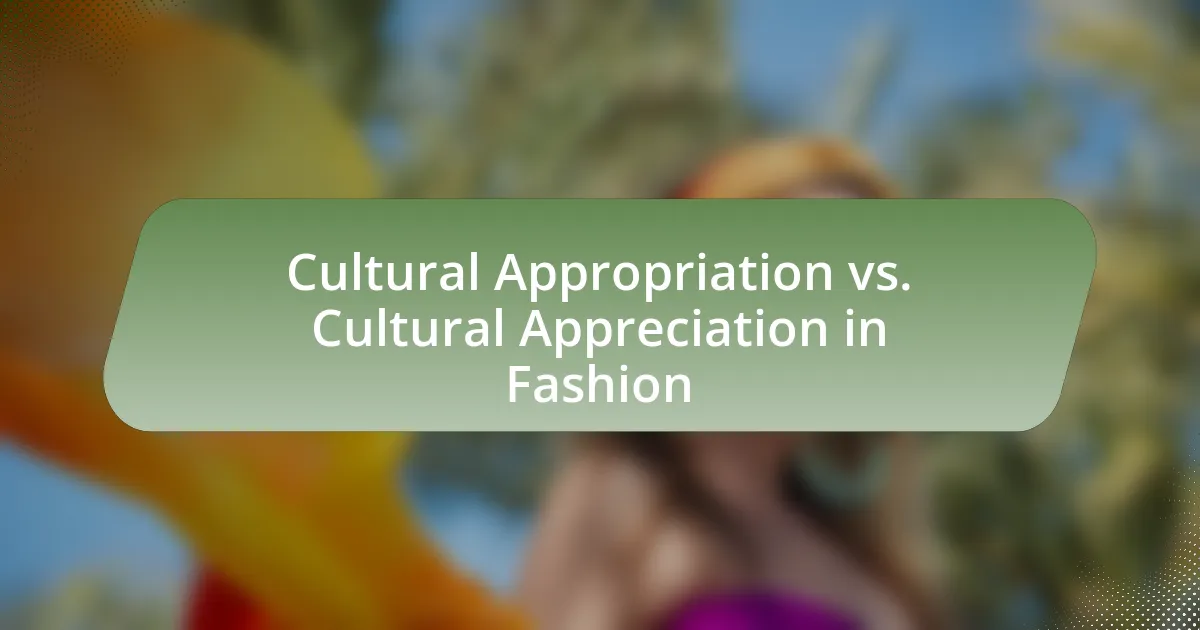The article examines the evolution of streetwear, tracing its origins from the late 1970s and early 1980s within skate and hip-hop cultures to its current status as a dominant force in mainstream fashion. It highlights key milestones, influential figures, and cultural influences that shaped the movement, including the impact of social media and collaborations with high-fashion brands. The defining characteristics of streetwear, its differentiation from traditional fashion, and current trends are also discussed, along with insights on navigating the streetwear landscape and building an authentic wardrobe. The article provides a comprehensive overview of how streetwear has transitioned from a niche subculture to a significant player in the global fashion industry.

What is the Evolution of Streetwear?
The evolution of streetwear began in the late 1970s and early 1980s, rooted in skate and hip-hop cultures. Initially, brands like Stüssy and Supreme emerged, blending casual wear with urban aesthetics, which appealed to youth subcultures. By the 1990s, streetwear gained traction through collaborations with high fashion, exemplified by designers like Jean-Paul Gaultier incorporating street elements into their collections. The 2000s saw streetwear become a global phenomenon, with brands like A Bathing Ape and Off-White leading the charge, further solidifying its presence in mainstream fashion. Today, streetwear is characterized by its blend of comfort, individuality, and luxury, with major fashion houses adopting streetwear styles, reflecting its transformation from a niche subculture to a dominant force in the fashion industry.
How did streetwear originate as a subculture?
Streetwear originated as a subculture in the late 1970s and early 1980s, primarily influenced by skateboarding, hip-hop, and punk cultures. This movement began in urban areas, particularly in California, where brands like Stüssy emerged, blending casual clothing with graphic designs and logos that resonated with youth identity. The rise of streetwear was further propelled by the adoption of these styles by influential figures in music and art, solidifying its place in popular culture. The combination of DIY aesthetics and a focus on individuality contributed to streetwear’s distinct identity as a subculture, which has since evolved into a global fashion phenomenon.
What cultural influences shaped the early streetwear movement?
The early streetwear movement was shaped by influences from skate culture, hip-hop, and punk rock. Skate culture introduced casual, functional clothing that prioritized comfort and mobility, while hip-hop brought an emphasis on bold graphics and logos, reflecting identity and status. Punk rock contributed a rebellious aesthetic, characterized by DIY fashion and anti-establishment sentiments. These cultural elements combined to create a unique style that resonated with urban youth, leading to the rise of brands like Stüssy and Supreme in the 1980s and 1990s, which further solidified streetwear’s identity and appeal.
Who were the key figures in the development of streetwear?
Key figures in the development of streetwear include Shawn Stussy, Hiroshi Fujiwara, and Nigo. Shawn Stussy, the founder of Stüssy, is credited with popularizing streetwear in the 1980s by blending surf culture with urban fashion. Hiroshi Fujiwara, known as the “Godfather of Streetwear,” played a pivotal role in merging street culture with high fashion through his brand, Fragment Design, and collaborations with major labels. Nigo, the creator of A Bathing Ape (BAPE), significantly influenced the genre in the 1990s by introducing unique graphics and limited-edition releases, which became hallmarks of streetwear culture. These individuals collectively shaped the aesthetic and commercial viability of streetwear, establishing it as a dominant force in contemporary fashion.
What are the defining characteristics of streetwear?
Streetwear is characterized by its blend of casual, comfortable clothing with elements of urban culture and high fashion. This style often includes oversized silhouettes, graphic tees, hoodies, sneakers, and accessories that reflect youth culture and street art. The influence of skateboarding, hip-hop, and punk subcultures is evident in the designs and branding, which frequently feature bold logos and unique graphics. Streetwear brands like Supreme and Off-White have gained prominence by creating limited-edition items that foster exclusivity and community among consumers. This combination of accessibility and high-demand exclusivity has solidified streetwear’s position as a significant force in contemporary fashion.
How does streetwear differ from traditional fashion styles?
Streetwear differs from traditional fashion styles primarily in its emphasis on casual, urban aesthetics and cultural influences rather than formal design and high fashion. Traditional fashion often prioritizes craftsmanship, seasonal trends, and runway presentations, while streetwear is rooted in youth culture, music, and social movements, often featuring graphic designs, oversized fits, and limited-edition releases. The rise of streetwear can be traced back to the late 20th century, influenced by skateboarding, hip-hop, and graffiti culture, which contrasts with the structured and often elitist nature of traditional fashion houses. This shift has led to streetwear becoming a dominant force in the fashion industry, with brands like Supreme and Off-White achieving significant commercial success and cultural relevance.
What role does graphic design play in streetwear aesthetics?
Graphic design is integral to streetwear aesthetics as it serves as a visual language that communicates identity, culture, and social commentary. The use of bold graphics, typography, and imagery in streetwear not only enhances the visual appeal of clothing but also reflects the subcultural roots and values of the community. For instance, brands like Supreme and Off-White utilize distinctive graphic elements to create a sense of exclusivity and cultural relevance, which resonates with their target audience. This connection between graphic design and streetwear is evidenced by the rise of collaborations between artists and fashion brands, further solidifying the role of design in shaping trends and consumer perceptions within the streetwear market.
Why did streetwear transition to mainstream fashion?
Streetwear transitioned to mainstream fashion due to its cultural significance and the influence of celebrities and social media. Initially rooted in youth subcultures, streetwear gained traction as high-profile figures like Kanye West and Rihanna embraced it, leading to increased visibility and desirability. The rise of platforms like Instagram allowed brands to reach wider audiences, further blurring the lines between streetwear and high fashion. Collaborations between streetwear brands and luxury labels, such as Supreme and Louis Vuitton, solidified its status in mainstream fashion, demonstrating its commercial viability and appeal to a broader demographic.
What societal changes contributed to the rise of streetwear in mainstream culture?
The rise of streetwear in mainstream culture was significantly influenced by the democratization of fashion and the increasing importance of youth culture. The emergence of social media platforms allowed for rapid dissemination of streetwear trends, enabling brands to connect directly with consumers and fostering a sense of community among enthusiasts. Additionally, the blending of high fashion with streetwear, exemplified by collaborations between luxury brands and streetwear labels, further legitimized streetwear in the fashion industry. The cultural significance of hip-hop and skateboarding also played a crucial role, as these movements popularized casual, urban styles that resonated with a broader audience.
How did collaborations with high-fashion brands impact streetwear’s popularity?
Collaborations with high-fashion brands significantly elevated streetwear’s popularity by bridging the gap between luxury and casual fashion. These partnerships, such as those between Supreme and Louis Vuitton or Off-White and Nike, introduced streetwear to a broader audience, enhancing its visibility and desirability. The fusion of high-fashion aesthetics with streetwear elements created a unique appeal, attracting fashion enthusiasts and collectors alike. This trend is evidenced by the skyrocketing resale values of collaborative pieces, often reaching thousands of dollars, indicating a strong market demand. Additionally, high-profile endorsements and runway appearances further legitimized streetwear within the fashion industry, solidifying its status as a mainstream cultural phenomenon.

What are the key milestones in the evolution of streetwear?
The key milestones in the evolution of streetwear include the emergence of skate culture in the 1980s, the influence of hip-hop fashion in the 1990s, the establishment of iconic brands like Supreme in the mid-1990s, and the mainstream acceptance of streetwear in the 2010s. Skate culture, characterized by brands such as Stüssy, laid the groundwork for streetwear by merging casual wear with urban aesthetics. In the 1990s, hip-hop artists like A Tribe Called Quest popularized oversized clothing and graphic tees, further shaping the style. Supreme’s launch in 1994 marked a pivotal moment, as it combined skate culture with high fashion, creating a new market. By the 2010s, collaborations between streetwear brands and luxury fashion houses, such as Louis Vuitton and Off-White, solidified streetwear’s status in mainstream fashion, demonstrating its cultural significance and commercial viability.
How did the 1990s influence streetwear’s growth?
The 1990s significantly influenced streetwear’s growth by popularizing urban culture and blending fashion with music and art. This decade saw the rise of hip-hop and skate culture, which heavily impacted streetwear brands like Stüssy and Supreme, leading to a shift in fashion norms. The emergence of influential figures, such as artists and athletes, who embraced casual, logo-centric clothing further propelled streetwear into the mainstream. Additionally, the proliferation of youth-oriented media and the internet allowed for greater visibility and accessibility of streetwear, solidifying its status as a cultural phenomenon.
What brands emerged during the 1990s that defined the era?
Brands that emerged during the 1990s that defined the era include Supreme, Stüssy, and A Bathing Ape (BAPE). Supreme, founded in 1994, became a cornerstone of streetwear culture, known for its distinctive box logo and limited product releases that created a sense of exclusivity. Stüssy, which began in the early 1980s but gained significant traction in the 1990s, blended surf and skate culture with urban fashion, influencing the aesthetic of streetwear. A Bathing Ape, established in 1993, introduced bold graphics and a unique camouflage pattern, becoming a symbol of luxury streetwear in Japan and beyond. These brands collectively shaped the identity of 1990s streetwear, reflecting the era’s youth culture and urban influences.
How did hip-hop culture contribute to streetwear’s evolution in the 1990s?
Hip-hop culture significantly influenced streetwear’s evolution in the 1990s by popularizing urban aesthetics and promoting brands that resonated with its community. Artists like Run-D.M.C. and Wu-Tang Clan showcased streetwear brands such as Adidas and FUBU, integrating them into their music and public personas. This visibility led to a surge in demand for casual, oversized clothing that reflected the hip-hop lifestyle, characterized by comfort and self-expression. The collaboration between hip-hop artists and fashion brands created a cultural phenomenon, establishing streetwear as a legitimate fashion category and paving the way for its mainstream acceptance.
What role did social media play in the evolution of streetwear?
Social media significantly accelerated the evolution of streetwear by providing a platform for brands and influencers to reach a global audience. This digital landscape allowed streetwear brands to showcase their designs, engage with consumers, and build communities around their products. For instance, platforms like Instagram and TikTok enabled brands such as Supreme and Off-White to cultivate a following, leading to increased visibility and sales. The viral nature of social media also facilitated the rapid dissemination of trends, allowing streetwear to transition from niche subculture to mainstream fashion, as evidenced by the rise in collaborations between streetwear brands and high-fashion labels.
How has Instagram changed the way streetwear is marketed?
Instagram has transformed streetwear marketing by enabling brands to reach a global audience instantly and fostering direct engagement with consumers. The platform’s visual-centric nature allows streetwear brands to showcase their products through high-quality images and videos, creating a strong aesthetic appeal that resonates with their target demographic. Additionally, Instagram’s features, such as Stories and Reels, facilitate real-time marketing and influencer collaborations, which have become essential for brand visibility and authenticity. According to a 2021 study by Business of Fashion, 70% of consumers reported discovering new brands on Instagram, highlighting the platform’s significant role in shaping consumer behavior and trends in the streetwear market.
What impact do influencers have on streetwear trends today?
Influencers significantly shape streetwear trends today by leveraging their social media platforms to promote brands and styles. Their ability to reach large audiences allows them to set trends quickly, often leading to viral moments that can elevate specific clothing items or brands to mainstream popularity. For instance, collaborations between influencers and streetwear brands, such as those seen with figures like Virgil Abloh and Travis Scott, have resulted in limited-edition releases that sell out rapidly, demonstrating the direct impact influencers have on consumer behavior and market demand. Additionally, a study by the NPD Group in 2021 indicated that 70% of Gen Z consumers are influenced by social media personalities when making fashion purchases, underscoring the critical role influencers play in the evolution of streetwear from niche subculture to a dominant force in the fashion industry.
What are the current trends in streetwear?
Current trends in streetwear include oversized silhouettes, bold graphics, and a blend of high fashion with casual wear. Oversized clothing, such as baggy jeans and large hoodies, has gained popularity, reflecting a shift towards comfort and relaxed styles. Bold graphics and logos are prevalent, often featuring collaborations with artists and brands, which enhance the uniqueness of pieces. Additionally, the fusion of luxury fashion with streetwear, exemplified by brands like Off-White and Balenciaga, showcases the mainstream acceptance of streetwear aesthetics. This trend is supported by the rise of social media influencers and celebrities who promote streetwear styles, further solidifying its place in contemporary fashion.
How are sustainability and ethical fashion influencing modern streetwear?
Sustainability and ethical fashion are significantly influencing modern streetwear by driving brands to adopt eco-friendly materials and transparent production practices. This shift is evident as consumers increasingly prioritize environmental responsibility and social ethics in their purchasing decisions, leading to a rise in brands that emphasize sustainable sourcing, such as using organic cotton or recycled materials. For instance, a report by McKinsey & Company highlights that 67% of consumers consider the use of sustainable materials as important when making fashion purchases. Additionally, collaborations between streetwear brands and environmental organizations further promote awareness and commitment to ethical practices, reinforcing the integration of sustainability into the streetwear culture.
What are the emerging styles and brands in today’s streetwear scene?
Emerging styles in today’s streetwear scene include oversized silhouettes, utilitarian aesthetics, and vibrant graphic prints. Brands such as Ader Error, Fear of God Essentials, and Palm Angels are gaining traction, reflecting a blend of high fashion and casual wear. Ader Error is known for its deconstructed designs, while Fear of God Essentials emphasizes minimalist luxury. Palm Angels merges street culture with Italian craftsmanship, showcasing the evolution of streetwear into a mainstream fashion phenomenon. These brands exemplify the shift towards inclusivity and diversity in style, appealing to a broader audience and redefining contemporary fashion norms.

How can one navigate the streetwear landscape today?
To navigate the streetwear landscape today, one should stay informed about current trends, engage with online communities, and understand the cultural significance of brands. Staying updated involves following influential streetwear blogs, social media accounts, and fashion publications that highlight emerging styles and collaborations. Engaging with online communities, such as forums and social media groups, allows individuals to share insights and gain perspectives from other enthusiasts. Understanding the cultural significance of brands, including their history and the messages they convey, enhances appreciation and informed purchasing decisions. For instance, brands like Supreme and Off-White have become symbols of streetwear culture, reflecting broader societal trends and artistic movements.
What tips can help individuals build a streetwear wardrobe?
To build a streetwear wardrobe, individuals should focus on key elements such as selecting versatile pieces, incorporating statement items, and understanding brand significance. Versatile pieces like graphic tees, hoodies, and joggers form the foundation of a streetwear wardrobe, allowing for easy mixing and matching. Statement items, such as unique sneakers or bold outerwear, can elevate an outfit and showcase personal style. Additionally, understanding the significance of brands, including collaborations and limited releases, can enhance the wardrobe’s authenticity and appeal. Streetwear culture often emphasizes individuality and self-expression, making it essential for individuals to curate a collection that reflects their personal aesthetic while staying informed about current trends and influential brands in the streetwear scene.
How can one identify authentic streetwear brands?
Authentic streetwear brands can be identified by their unique designs, cultural relevance, and limited availability. These brands often draw inspiration from urban culture, art, and music, which is reflected in their collections. Additionally, authentic streetwear brands typically have a strong community presence, engaging with their audience through collaborations and events. For example, brands like Supreme and Off-White have established themselves through distinctive logos, high-quality materials, and strategic scarcity, which enhances their desirability and authenticity.
What are the best practices for mixing streetwear with other styles?
The best practices for mixing streetwear with other styles include balancing casual and formal elements, layering thoughtfully, and incorporating accessories that complement both styles. For instance, pairing a streetwear graphic tee with tailored trousers creates a juxtaposition that highlights both aesthetics. Layering a streetwear hoodie under a structured blazer can also add depth to an outfit while maintaining comfort. Accessories like sneakers or a beanie can bridge the gap between streetwear and more polished looks, ensuring cohesion. These practices are supported by fashion trends where designers like Off-White and Balenciaga have successfully blended streetwear with high fashion, demonstrating the versatility and appeal of this hybrid style.
What resources are available for staying updated on streetwear trends?
To stay updated on streetwear trends, individuals can utilize various resources including fashion blogs, social media platforms, and dedicated streetwear websites. Fashion blogs such as Hypebeast and Highsnobiety provide timely articles and insights on the latest releases and collaborations. Social media platforms like Instagram and TikTok are essential for real-time updates, as brands and influencers frequently post about new trends and styles. Additionally, websites like StockX and Grailed offer market insights and trend analysis based on sales data, helping enthusiasts understand what is popular in the streetwear community. These resources collectively ensure that individuals remain informed about the evolving landscape of streetwear.
Which websites and social media accounts are essential for streetwear enthusiasts?
Essential websites for streetwear enthusiasts include Hypebeast, Highsnobiety, and Complex, which provide news, trends, and product releases in the streetwear scene. Social media accounts such as @hypebeast, @highsnobiety, and @complex are crucial for real-time updates and community engagement. These platforms are recognized for their influence in shaping streetwear culture, with Hypebeast boasting over 9 million followers on Instagram, highlighting its significant reach and authority in the niche.
How can one participate in the streetwear community effectively?
To participate effectively in the streetwear community, one should engage actively through social media platforms, attend events, and collaborate with brands or artists. Engaging on platforms like Instagram and TikTok allows individuals to connect with like-minded enthusiasts and stay updated on trends. Attending streetwear events, such as pop-up shops or fashion shows, fosters networking opportunities and community involvement. Collaborating with brands or artists can enhance visibility and credibility within the community, as partnerships often lead to shared audiences and increased recognition. These methods are supported by the rise of social media as a primary communication tool in fashion, with platforms reporting significant user engagement in streetwear-related content.




